Dadasaheb Phalke: The ‘Dawn’ of Indian Cinema
03 May: An Epochal Day in the History of Indian Cinema!
Raja Harishchandra: The FIRST indigenous Indian film released on 03 May 1913!!
Dadasaheb Phalke: The ‘Dawn’ of Indian Cinema with a Method to his Madness and Vision to his Versatility!!!
Circa 1896. Lord Elgin, the representative of Queen Victoria, ruled India. The country was in the grip of political turbulence and throes of a freedom movement. There were widespread fire, floods and famine and amidst all the frenzy and fury, ‘Cinema’ was born.
After their successful inaugural public show in Paris in December 1895, the Lumiere brothers, Loius and Auguste, made their way to the Indian continent in July 1896 and cast their magic with six ‘moving pictures’ or rather ‘living photographic pictures’ as it was extensively publicised. The cinematographe shows were presented in Bombay’s Watson Hotel, an exclusive inn for the elite Europeans. Thereafter, the shows were moved to the Novelty Theatre for regular public viewing which continued till mid August 1896.
An unprecedented euphoria was created and several enterprising and talented young men got entranced by this popular form of entertainment; prominent names include the never much remembered men with artistic and creative bent: Hiralal Sen, Harishchandra Sakharam Bhatavdekar, F B Thanawala, Nanabhai Govind Chitre, Ramchandra Gopal Torney. A mention is also made of Jamsetji Framji Madan and Abdulally Essoofally who were more of showmen and theatre owners engaged in exhibition of films to make the audience cinema conscious. Most of the creative masterminds made efforts to capture or cover general events, celebrations, festivals, processions, road side happenings or make short films of episodes or scenes from plays staged in the theatres.
Though their painstaking efforts were commendable yet they did not provide the needed impetus to regular feature film making based on a full length story.
The year 1913 marked a turning point in the realm of film making and entertainment. Yet another enterprising man, in his early 40s, with vision and versatility, foresight and fortitude, confidence and conviction, embarked on the trodden path of his less successful predecessors or contemporaries. And soon he came to be hailed as the pioneer who laid the foundation of Indian Cinema and virtually shaped its future. That man was Dhundiraj Govind Phalke, the Father of Indian Cinema.
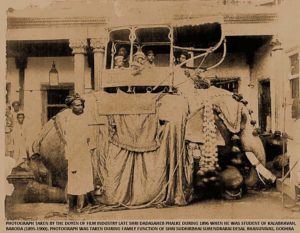 Dhundiraj or Dadasaheb Phalke, as he was fondly called, was born on 30 April, 1870 at Trymbakeshwar, near Nashik in Maharashtra in a traditional and conservative Brahmin family. Dhundiraj was a store house of multi-talent: printer, painter, playwright, photographer, magician, musician, make-up artiste, costume designer, art director which helped him in his passion and pursuit of filmmaking. He was a restless man with all the sparks of a genius in the making. To the left is a rare picture taken by Dadasaheb Phalke when he was a student. Photo Courtesy: Dr. Kiran Phalke, grandson of Dadasaheb Phalke
Dhundiraj or Dadasaheb Phalke, as he was fondly called, was born on 30 April, 1870 at Trymbakeshwar, near Nashik in Maharashtra in a traditional and conservative Brahmin family. Dhundiraj was a store house of multi-talent: printer, painter, playwright, photographer, magician, musician, make-up artiste, costume designer, art director which helped him in his passion and pursuit of filmmaking. He was a restless man with all the sparks of a genius in the making. To the left is a rare picture taken by Dadasaheb Phalke when he was a student. Photo Courtesy: Dr. Kiran Phalke, grandson of Dadasaheb Phalke
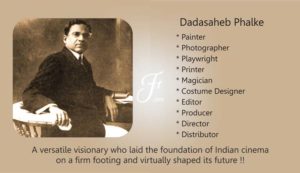
There’s an interesting story behind how Dhundiraj became ‘Dadasaheb’ and how he got the patronymic ‘Phalke’. According to Chandrashekar Pusalkar, his grandson (from his daughter) and Founder of Dadasaheb Phalke International Awareness Mission, the original family name of Dadasaheb was ‘Bhatt’. Since his forebearers and forefathers were involved in supplying to the Peshwa Kings of the Maratha empire, banana leaves on which food was served, that particular process in Marathi was called ‘Phalke’ and the name stuck to him. As regards the name ‘Dadasaheb’, as a child, his friends made fun of the name Dhundiraj and distorted it to ‘Dhundi’ or ‘Dhondya’. A hurt Dhundiraj adopted a different name and preferred to be called as ‘Dada’. And as he grew up and with name and fame, the honorific ‘Saheb’ got appended to ‘Dada’.
A momentous change in his thinking and life took place after he saw the Hollywood film ‘The Life of Christ’ on the Christmas day in 1910. His wife, Saraswatibai, was with him. On way back home, he said, “Like the life of Christ, we shall make pictures about Rama and Krishna’. Initially, she was not happy to hear that and expressed her displeasure in silence all through their way back home. But once he embarked on a new career and began his tryst with film making, which was soon to become his profession and passion, his sole source of strength was none other than his self~effacing and sacrificing wife Saraswati bai.
Phalke left no stone unturned to transform his dream into a reality. Despite the warning of people to give up his dream, he went ahead brimming with confidence, enthusiasm, knowledge and zeal backed by his versatility and support of his wife and children, his disciples and other close associates.
Phalke borrowed some money from a well wisher friend and pledged his insurance policy to raise funds to pursue his dream. He went to England in early 1912 to study the art and craft of film making and film technology and returned with the best equipment and machinery that the funds could buy.
He then started the film ‘”Raja Harishchandra”, a story from the great Indian epic Mahabharata, under the banner Phalke Films. He shot a few scenes with his wife and children and showed the prints to a financier to raise funds; he had nothing left to offer as security and finally, mortgaged his wife’s jewellery. The life and future of his family and his trials and tribulations to transcend his dream in to a reality seemed insignificant to him before his saga of struggles and sacrifices.
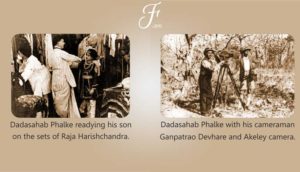
He cast Dattatreya Damodar Dabke as Raja Harishchandra but getting a female actor to play Taramati, the queen’s role, posed a formidable problem as girls from respectable families were sceptical about entering the ‘ill reputed’ showbiz world. Even girls from the red light areas were reluctant and some of them backed out at the last moment.
Finally, as in the English plays, Phalke almost tempted an effeminate looking youth, Anna Salunkhe, who worked as a cook in a restaurant in Grant Road for Rs. 10 per month, to play the character of Taramati. Phalke offered him much more only to shave off his moustache and get into the queen’s garb and he succeeded! As women were prohibited from taking part in commercial performing art, the other female characters in the film were also played by men!
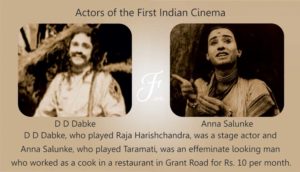
With finance arranged and the female lead finalised, half the battle was won. But the real hurdle awaited Phalke. He single handedly trained his actors and technicians and supervised the erection of sets, besides producing, directing, photographing, developing and printing and finally editing the film; he was also the publicist, projectionist and distributor of his films. Of course, during the entire shooting of the film and even thereafter, his wife Saraswati bai stood like a sturdy rock.
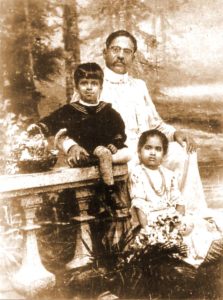 As mentioned by their grandson Chandrashekhar Pusalkar, “Saraswati bai not only managed her nine children (Picture at left shows Dadasaheb Phalke with his son Neelkanth and daughter Mandakini) but also held white bed sheets for hours together in the scorching sun as light reflectors; mixed film developing chemicals; perforated the raw film sheets at night in the candle light; cooked food for the entire unit comprising 60 to 70 people and generally was his enlightened partner in every enterprise. That makes her the first technician of the film industry”!
As mentioned by their grandson Chandrashekhar Pusalkar, “Saraswati bai not only managed her nine children (Picture at left shows Dadasaheb Phalke with his son Neelkanth and daughter Mandakini) but also held white bed sheets for hours together in the scorching sun as light reflectors; mixed film developing chemicals; perforated the raw film sheets at night in the candle light; cooked food for the entire unit comprising 60 to 70 people and generally was his enlightened partner in every enterprise. That makes her the first technician of the film industry”!
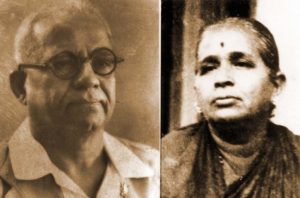
Photo Courtesy: Dr. Kiran Phalke, grandson of Dadasaheb Phalke
Dadasaheb Phalke almost ruined his health and risked his eyesight only to give a visage to his vision!
Dadasaheb Phalke made the first indigenous film “Raja Harishchandra“. The film was released successfully in Bombay’s Coronation Theatre on May 3, 1913. That heralded the Silent Era in films and the ‘sounds of silence’ dominated for almost two decades.
The film elicited a frenzied response and Phalke made several other silent films mostly based on epics and legends, films like “Mohini Bhasmasur”, “Satyavan Savitri”, “Lanka Dahan”.
Following the spectacular success of “Lanka Dahan”, Phalke received several offers of finance from eminent industrialists and businessmen. And, in 1917, the Hindustan Cinema Film Company was formed as a partnership company with Phalke as its working partner and a few others as managing and financial partners. Ownership rights of his films were taken over by the new company. Under the new banner, he directed films like “Shree Krishna Janam”, “Kaliya Mardan”, “Kansa Vadha”, “Shree Rama Janma”, “Pundalik” to name a few.
With his innovative skills, trick photography, special effects and all the visual appeal, his films attracted huge audience and he met with more success. An adept and accomplished magician that he was, he made a short film by reversing his name to ‘Kelpha’ and prefixing the honorific ‘Professor’ to it.
Phalke drew heavily from the Indian mythology and a true patriot that he was, all his films were rooted in the Indian soil. His films were well received in other cities like Calcutta and Madras and also in Colombo, Rangoon and Singapore and also London. The press in London reviewed “From the technical point of view, Phalke’s films are excellent”. Despite lucrative offers pouring from abroad for making films with better facilities and commercial prospects, Dadasaheb Phalke chose to make films with his ‘swadeshi‘ spirit! 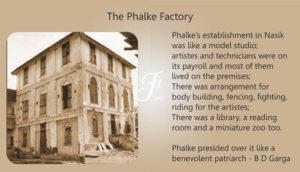
However, differences in the matter of running the studio and the type of films to be made cropped up between him and his other partners and he quit the company in 1919 only to rejoin in 1921 on his own terms. He made “Sant Tukaram” and a string of successful films followed in the next ten years till the advent of sound in 1931.
But by then, he was a changed man, much older but not worldly wise and practical, his heart still ruling his head. He was tired of his ongoing battles with the financiers and his partners, disillusioned and disgusted with the changing scenario and crass commercialisation of art, constrained by several other factors which were not congenial to his artistic and creative temperament.
In the meantime, several other filmmakers and companies like Madan Theatres (Calcutta), Kohinoor (Bombay), Maharashtra Film Company (Kolhapur) joined the fray breaking the virtual monopoly of Phalke’s Hindustan Cinema Film Company.
On 13 February, 1928, Dadasaheb Phalke gave an interview to the Enquiry Committee set up by the Government of India under the Chairmanship of Dewan Bahadur T Rangachariar (copy of this rare document made available to me by his grandson Kiran Phalke). Phalke was quite candid in his reply and most of the replies beginning in monosyllables were followed by critical comment on the general trend in filmmaking and quality of films made then (he was analytical and critical about his films too; in fact, the self effacing multitalented maveric invited positive criticisms to improve himself).
Phalke commented on the artistic merits, the film making techniques, the photography, western and permicious influences on the Indian audience (including censoring of the increasingly overt attitude towards love making and kissing scenes), the monopoly of the Madan Theatres who controlled nearly one third or one fourth of the cinema theaters and other related aspects. He also suggested the establishment of a school to teach acting, photography, screenplay and scenario writing among other things.
With the arrival of sound, Phalke couldn’t adapt to changing tastes, emerging trends and new techniques. The last silent film he made for the company was “Setu Bandhan” in 1932. With a vain attempt at synchronising sound and relying mainly on visual appeal, the film failed to attract audiences.
In 1937, he directed his first and last talkie film “Gangavataran” for Kolhapur Cinetone. He wrote the lyrics also. The film was released in August 1937 at the Royal Opera House and met with the same fate.
In 1938, under the leadership of Chandulal Shah of Ranjit Movietone, the film industry celebrated the Silver Jubilee of Indian Cinema. Among the innumerable and illustrious guests was a man in his late sixties, totally unnoticed and unrecognized. Disgustingly shocking, he was seated in some corner away from the other distinguished guests and marque names who shared the stage with the then Governor of Bombay.
This man had sacrificed his life for films; he had made about a hundred silent films; he had a sprawling studio with all in-house facilities and which he ruled like a benevolent patriarch; the advent of sound and the changing times and trends affected his kind of films; he was a legend who was no more in the reckoning; he never craved for publicity and chose to remain from the limelight all through his filmmaking career; he was relegated to the annals of history and had become forgotten name even when he was alive; he had lost everything that he owned and was reduced to penury; age and ailments had made him really unrecognisable!!
Who was this man who was literally sidelined and whose immense contribution to cinema was forgotten ruthlessly? Shantaram identified him and ushered him respectfully onto the stage and ‘introduced’ him to the then present movie moghals who owed every bit of their achievement and success to this man! That man was, hold your breath, none other than Dadasaheb Phalke, the Father of Indian Cinema who had single handedly and virtually shaped the future of Indian Cinema!!
The year 1938 will be remembered for this dishonourable and unforgivable act of discredit to the ‘Bhishma Pitama‘ of Indian Cinema if not for any other major cinematic contribution.
Dadasaheb Phalke died an embittered man and in penury on 16 February, 1944 at the age of 74.
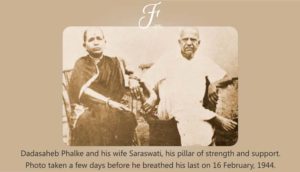
In appreciation and recognition of his pioneering effort, the Government of India instituted in 1969 the Dadasaheb Phalke Award in his name; the prestigious award is given away every year to film personalities for achieving excellence and their significant contribution to Indian Cinema. A commemorative postage stamp was also issued in 1971.
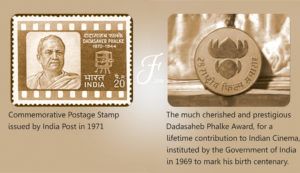
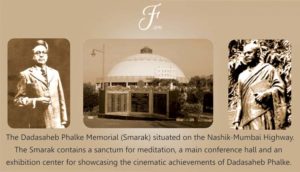
But Dadasaheb Phalke, the Man with a Mission and Method to his Madness called Movies, in whose name the award is given, is an unforgivably forgotten name today!
This truism must have dawned on the ‘Dawn’ of Indian Cinema at the twilight of his life:
वक़्त की धूप में यादें भी पिघल जाती हैं
लोग मुझे भी भुला देंगे फ़साने की तरह।
To commemorate the Centenary of Indian Cinema, Keep Alive organised three musical evenings titled “Movie Moghals“ on 16 February (the day Dadasahab Phalke shed his mortal coil), 20 February and 25 February, 2013. These were Curtain Raisers to the four part series of centenary celebration programmes titled “Sau Saal of Cinema” held during the year 2013 – 14 (April~March). The events began with glorious tributes to Dadasaheb Phalke for his significant contribution to Indian Cinema.
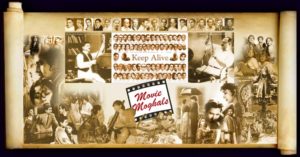
On 3 May, 2016, Keep Alive organised a reverential tribute to Dadasaheb Phalke under the auspices of its offspring Manohar Monologues! The nostalgic inaugural event was a fitting tribute to the Father of Indian Cinema and unraveled the illustrious life and career of Dadasaheb Phalke and the silent films made by him as well as others of the silent era through an audio~visual presentation.
To commemorate his 150th Birth Anniversary falling on 30 April, 2020, an audio~visual on the life and films of Dadasaheb Phalke was planned on 02 May, 2020 in the august presence of his family members. Unfortunately, due to the outrageous outbreak of the Coronavirus and the nationwide curfew and lockout imposed, the event stands cancelled as of now. The evening was also to present a four minute video on the Manohar Movieलोग of Hindi Cinema who debuted in the silent era and in the first decade (1931 ~ 1939) of the talkies era.
I sign up with the hope that the Government will honour posthumously The ‘Dawn’ of Indian Cinema with the much deserved and prestigious Bharat Ratna for his pioneering, outstanding and unparalleled contribution to Indian Cinema. Better late than never!!
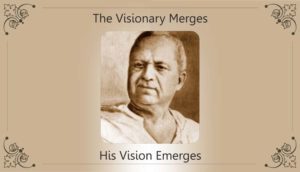
Manohar ‘Mohabbat’ Iyer
Photo Courtesy: Google and Personal Collection

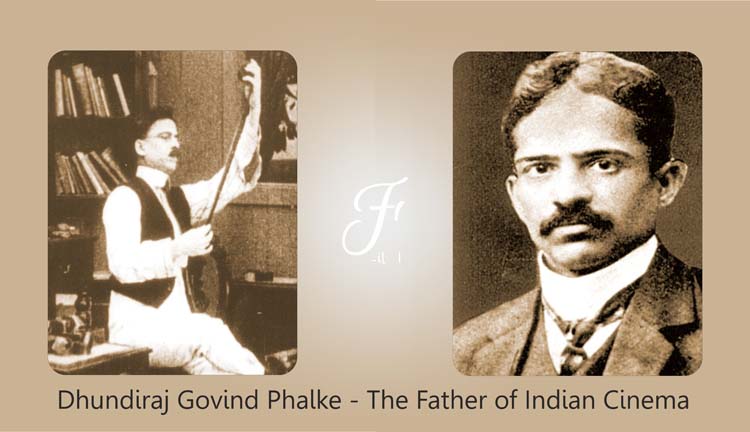
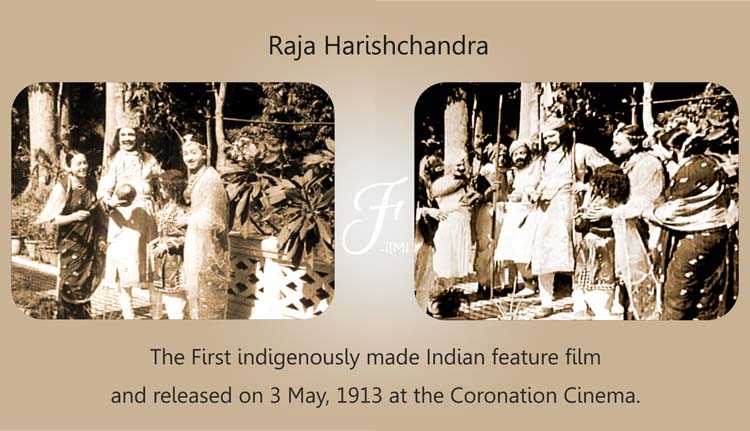
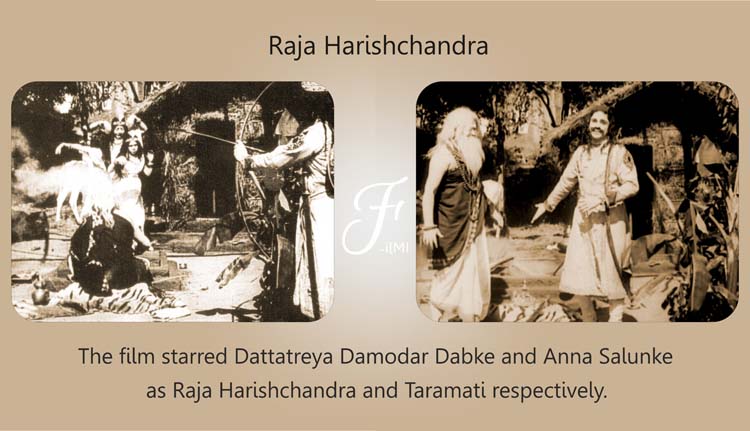
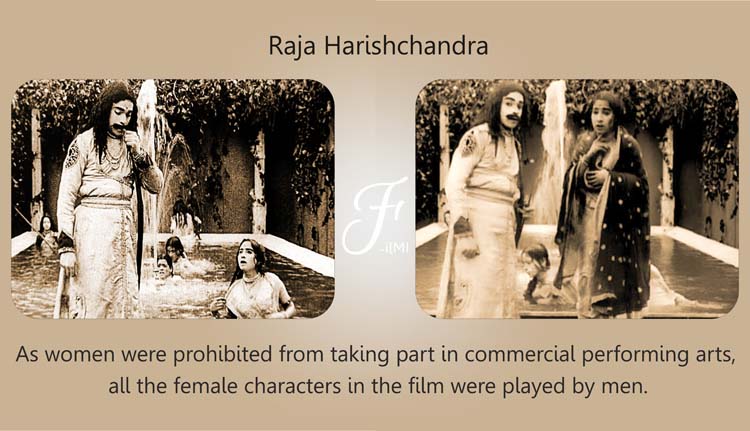
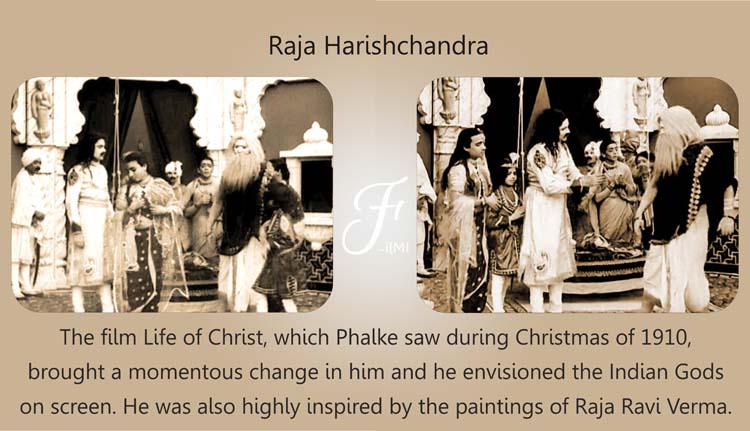
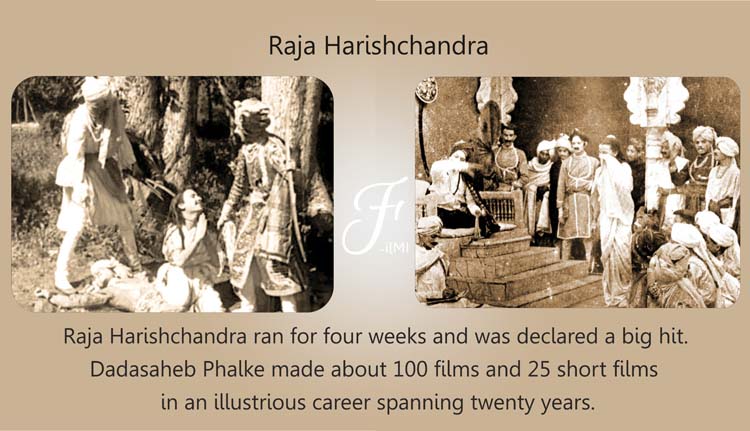
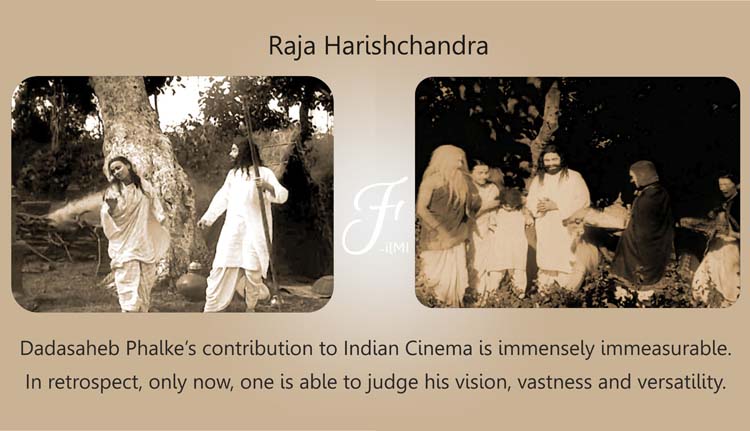
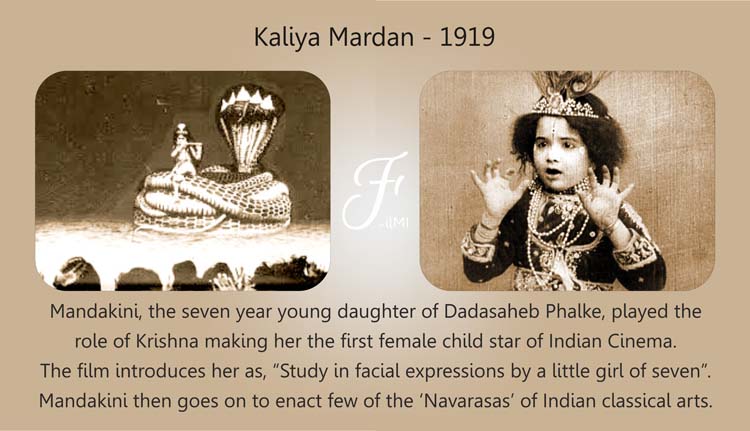
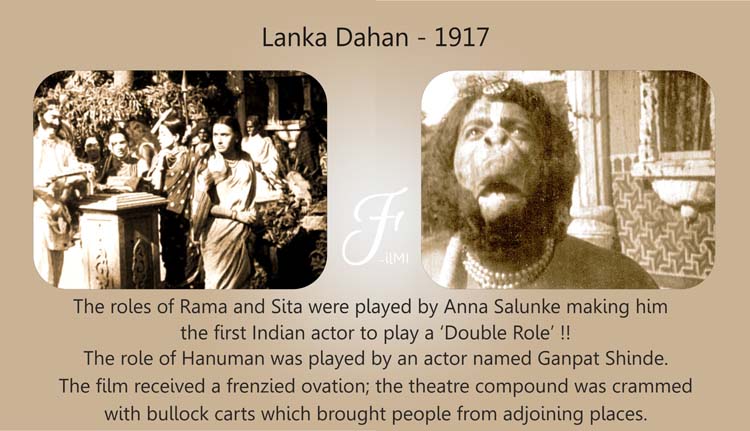
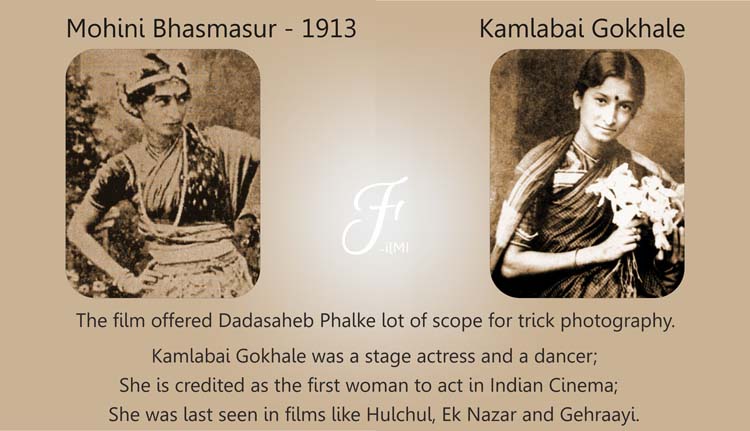
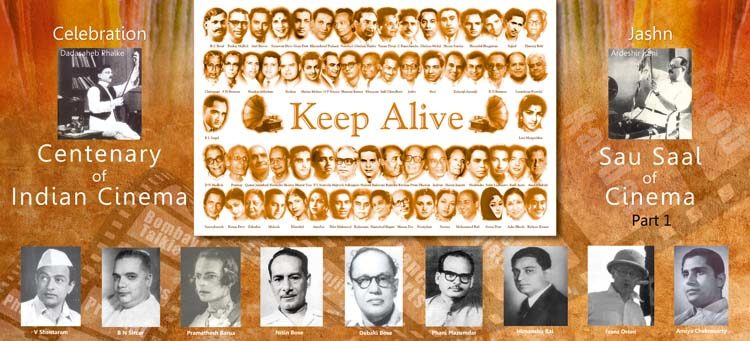
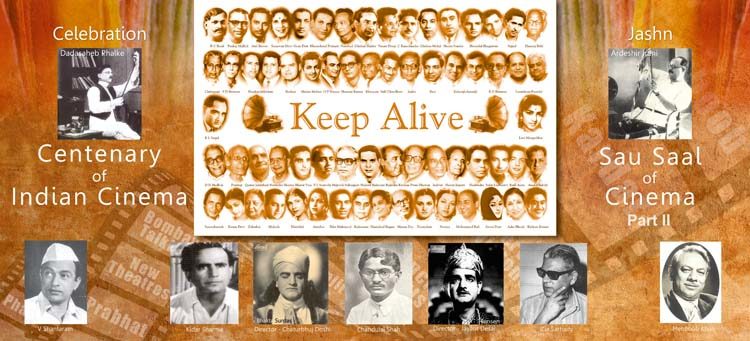
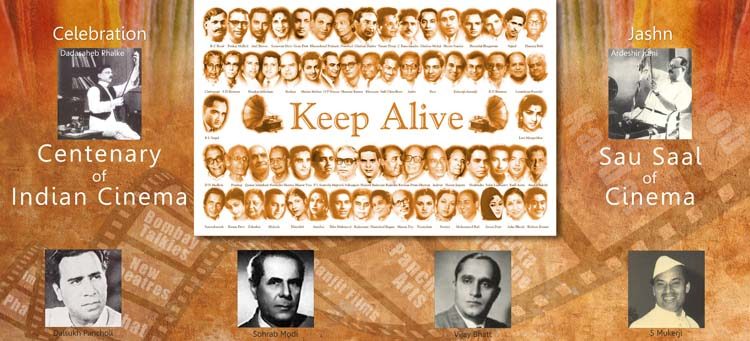
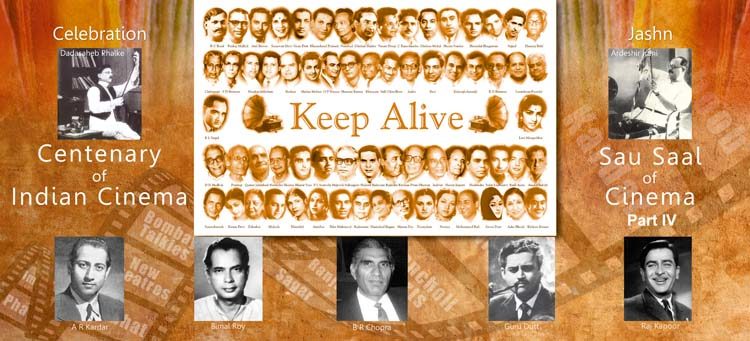
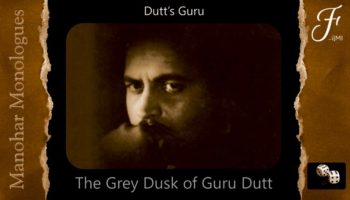
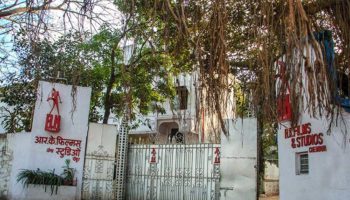
Dear Manohar what a great write-up. Thanks a lot. You know more than what we know
Oh Sir, knowing more than a family member would be blasphemy! I accept with all humility your kind words of appreciation.
I have the highest reverence for your grandfather and have never failed to acknowledge his matchless contribution to Indian cinema in my stage events.
Am planning a film and, inspired by him and his genius, am multitasking: I have written the story, screenplay, dialogues, lyrics and intend producing and directing it as well and may also end up acting in it.
Needless to mention, the film will be dedicated to Dadasaheb Phalke to mark this landmark and momentous occasion of his 150th Birth Anniversary.